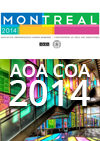
Sports Medicine
COA/AOA: Autograft type may not predict re-injury at 2 years following ACL reconstruction
330 patients requiring ACL reconstruction were randomized to undergo the procedure using either a double-bundle hamstring tendon autograft (DB group), a quadruple-stranded hamstring tendon autograft (HT group) or a patellar tendon autograft (PT group). The purpose of this study was to compare these two treatment approaches with respect to rate of re-injury and quality of life at 2 years postoperatively. Results indicated that all three groups yielded statistically similar scores for quality of life. Although younger age and Tegner activity levels at 2 years were found to be significant predictors of complete traumatic re-ruptures and traumatic re-injuries, this was irrespective of graft type used. There were no significant predictors for atraumatic graft failure.
Unlock the full article
Get unlimited access to OrthoEvidence with a free trial
Start TrialCritical appraisals of the latest, high-impact randomized controlled trials and systematic reviews in orthopaedics
Access to OrthoEvidence podcast content, including collaborations with the Journal of Bone and Joint Surgery, interviews with internationally recognized surgeons, and roundtable discussions on orthopaedic news and topics
Subscription to The Pulse, a twice-weekly evidence-based newsletter designed to help you make better clinical decisions
Exclusive access to original content articles, including in-house systematic reviews, and articles on health research methods and hot orthopaedic topics
Or continue reading this full article
Register Now

Subscribe to "The Pulse"
Evidence-Based Orthopaedics direct to your inbox.




































